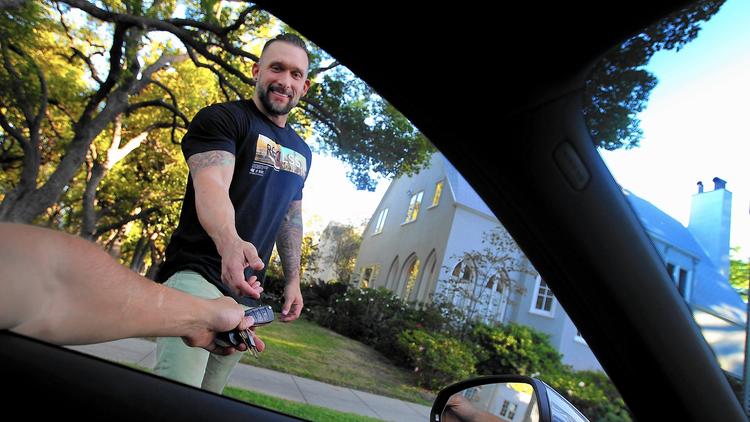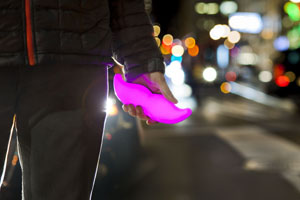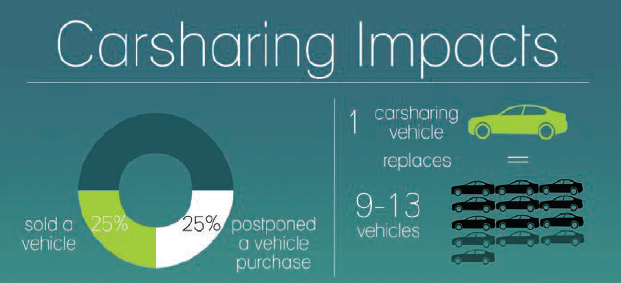
by mattchristensen00 | Jun 29, 2015 |
By Jerry Hirsch For at least 22 hours a day most cars sit parked, sucking up their owners’ money while waiting to be driven. For most people, it’s one of their most underutilized — but most expensive — assets. Now, some companies are devising ways to help people profit from their vehicles. Start-ups like RelayRides and Getaround help people rent out their cars during down time. Uber, Lyft and Sidecar connect car owners with people willing to pay for a ride. The rapid growth of these start-ups is transforming transportation — making it easier than ever before to get around without owning a car — and forcing automakers to devise new strategies to lure prospective buyers. Last week, Ford launched a car-sharing program that offers buyers a new way to offset the pains of ownership by tapping into what is essentially an Airbnb on wheels. And in Germany, General Motors launched a CarUnity app that lets owners of any brand rent their vehicles to Facebook friends or people in the app’s network. To read the full article, click...

by Innovative Mobility Research | Jun 22, 2015 |
By Agence France-Presse (AFP) In addition to concerns about greenhouse gases and pollution, there are many reasons why a growing number of urban dwellers are opting not to buy their own car: a chronic shortage of parking space, soaring insurance and upkeep costs, and high fuel prices. Many prefer to use the well developed and efficient public transport systems found in Germany and other countries. “In towns and cities, young people don’t necessarily want to have a car,” said Stefan Bratzel, director of the Center for Automotive Management (CAM) in Bergisch-Gladbach. They still want the convenience of a car, without the financial burden of owning one. Yet they do not want to have to use traditional car-rental firms every time they decide to go for a spontaneous jaunt into the countryside. Further afield, there are around 700,000 users in Japan, which started car-sharing schemes in 2007, and 1.3 million in the United States, according to recent data published by the University of California in Berkeley. Gunnar Nehrke of BCS said that Germany stands out because of the sheer size and extent of its network. “In many countries, there is car-sharing in the capital, or two or three of the biggest cities. Here, car-sharing is available in 490 towns and municipalities,” he told AFP. BCS predicts the number of users in Germany will rise to 2 million in the next five years. To read more, click...
by Innovative Mobility Research | Jun 18, 2015 |
By Michelle Quinn If the future of work is more about getting gigs and less about holding traditional jobs, what sort of protections will workers have? That’s what I’m wondering after news that the California Labor Commission ruled that a former Uber driver in California was technically an employee, and that the company owes her more than $4,000 to cover some of her costs. The decision is nonbinding and applies to just this one former driver, as the company points out. But we are only getting started talking how new companies in the so-called “sharing economy” are reshaping work and whether this new model — some have called these workers the “uncollared” — is something that benefits both workers and customers. “Innovation often gets out in front of public policy,” Susan Shaheen, an adjunct professor of civil and environmental engineering at UC Berkeley. It’s time for the companies, regulators, policymakers and the public to really look at whether this model — less “sharing” but more of a new tech middleman connecting service providers with users via an app — is a win-win for everyone, and if not, come up with new solutions. But workers, too, should have a say. Uber and other firms have given their drivers many opportunities they may not have previously had to earn money in a new way. If these services have to change to comply with state and federal labor laws, that could fundamentally change the relationship they have with their drivers. If Uber has to set schedules, pay benefits and send their drivers through an HR office just like a regular employer, will...

by Innovative Mobility Research | Jun 18, 2015 |
By Josh Stevens In the past year or so, two innovative companies emerged, amid bitter competition but parallel success, to solve some of transportation’s most vexing problems. They have brought spirited late-night revelers home safely. They have gotten travelers to the airport on time. They have dropped off sandwiches to hungry offices. They have given taxi companies fits. By some accounts, Uber and Lyft, which are each operating in dozens of metro areas around the country, have only one major challenge left to overcome. It is the one that has baffled transportation planners, highway builders, soccer moms and weary executives for generations: mobility in the suburbs. “I personally use these services to complete first-mile, last-time trips,” said Susan Shaheen, engineering professor and director of the Innovative Mobility Research program at the University of California, Berkeley. “It’s filling a gap and making it possible for me to take public transit into the city, versus driving.” Shaheen said that in a recent survey of ride-hail passengers who were getting out of cars in downtown San Francisco, a potentially significant number had begun their trips at transit stops. The ride-hailing companies’ ability to serve non-driving residents could be even more important than what they do for commuters or for business travelers. Campbell said that many of his passengers are elderly and that, despite the seeming divide between the smartphone and rotary phone generations, they have found the apps to be relatively easy to use. In many areas, these options could complement, or replace, services that are often costly and inefficient. These include paratransit and assistance for the elderly. “Agencies are raising this...

by Innovative Mobility Research | Jun 17, 2015 |
By Makenzi Rasey Confession: When I started sharing rides as a means to get around, it wasn’t entirely for a greater good, or for any particularly noble reasons. I wanted to get where I needed to go as conveniently, quickly and inexpensively as possible. As ridesharing turned into peer to peer car-sharing -through services like GetAround andRelayRides– I still saw such travel as a means for efficient and affordable transportation. It didn’t immediately occur to me that what I was doing had broad and measureable environmental benefits. How little I knew! From Susan Shaheen, director of Innovative Mobility Research at UC-Berkeley’s Transportation Sustainability Research Center, I learned that “One car-sharing vehicle can replace 9 to 13 vehicles among car-sharing members because their vehicles were sold or they postponed purchasing vehicles,”. Dr. Shaheen’s research also found that carsharing “results in notable reductions in vehicle miles traveled (VMT) (27% to 43%) and in greenhouse gas (GHG) emissions (an average reduction of 34% to 41% and an average decrease of 0.58 to 0.84 metric tons/household).” That’s not all. To read full article, click...





